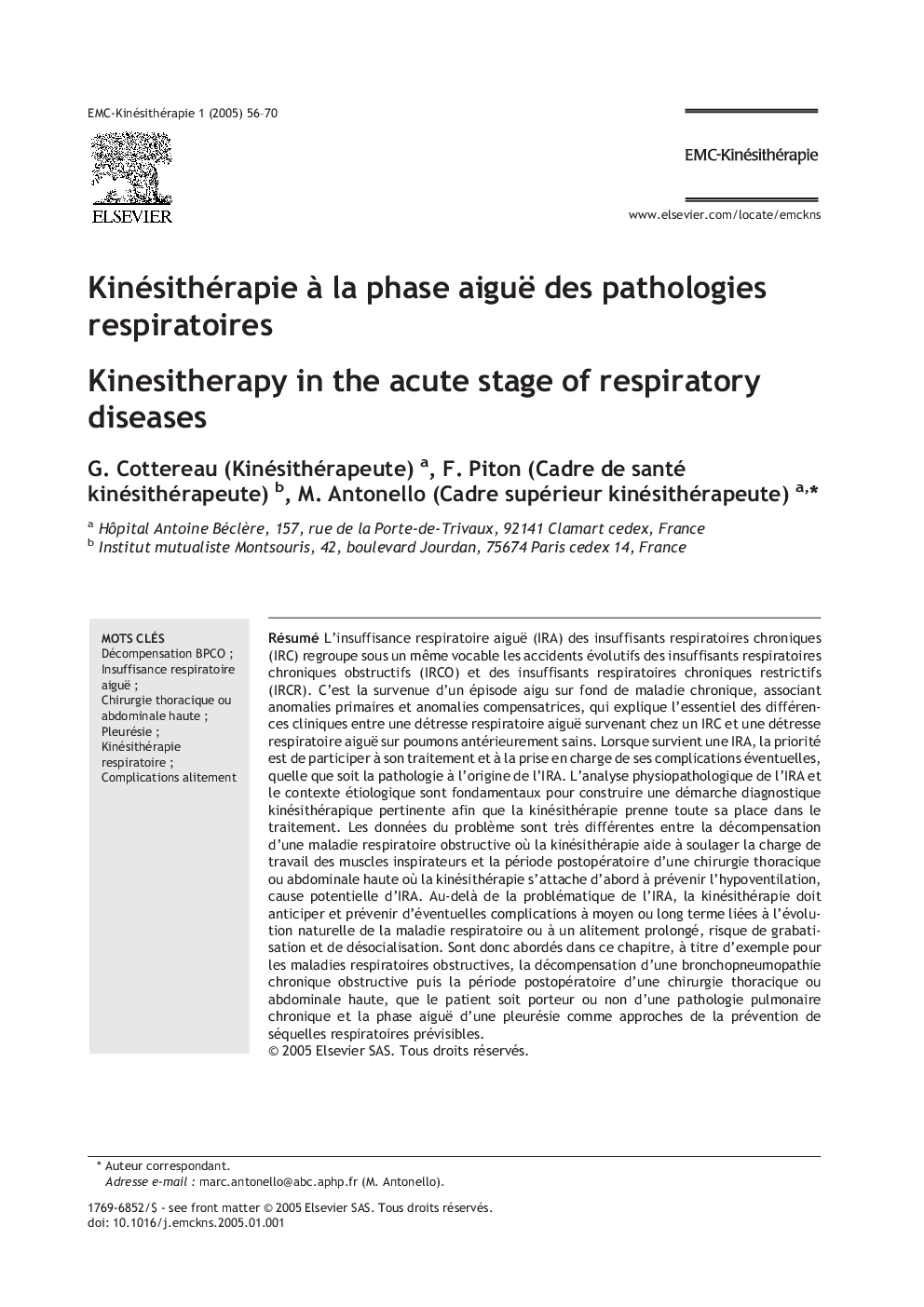| Article ID | Journal | Published Year | Pages | File Type |
|---|---|---|---|---|
| 9294276 | EMC - Kinésithérapie | 2005 | 15 Pages |
Abstract
Acute respiratory failure (ARF) in patients with chronic respiratory failure (CRF) encompasses within a single denomination the progressive events occurring in patients with obstructive CRF (OCRF) as well as those occurring in patients with restrictive CRF (RCRF). Most clinical differences that may be observed between an acute respiratory distress occurring in a CRF patient and an acute respiratory distress occurring in previously healthy lungs may be explained by the occurrence of an acute episode in a chronic context that combines primary abnormalities and compensative abnormalities. At the occurrence of an ARF, it is of utmost importance to initiate a therapy and manage potential complications, whatever the aetiology. Adequate kinesitherapy necessitates a diagnostic process essentially based on the ARF pathophysiological analysis and aetiological context. A problem of decompensation related to an obstructive airway disease in which kinesitherapy helps decreasing the workload of breathing muscles differs from that of a thoracic or an upper abdominal surgery postoperative period in which kinesitherapy is expected to prevent hypoventilation, a potential cause of ARF. Beyond the problem of ARF, kinesitherapy should anticipate and prevent potential complications related to the natural course of the respiratory disease or to a prolonged bed rest period that convey a risk of definitive bed rest and de-socialisation. As examples concerning obstructive respiratory diseases, the present chapter reviews the decompensation related to obstructive chronic bronchopneumopathy, the postoperative period following thoracic or upper abdominal surgery, independently from the presence of chronic pulmonary disease, and the acute stage of pleurisy as an approach of the prevention of expectable respiratory sequelae.
Keywords
Related Topics
Health Sciences
Medicine and Dentistry
Medicine and Dentistry (General)
Authors
G. (Kinésithérapeute), F. (Cadre de santé kinésithérapeute), M. (Cadre supérieur kinésithérapeute),
